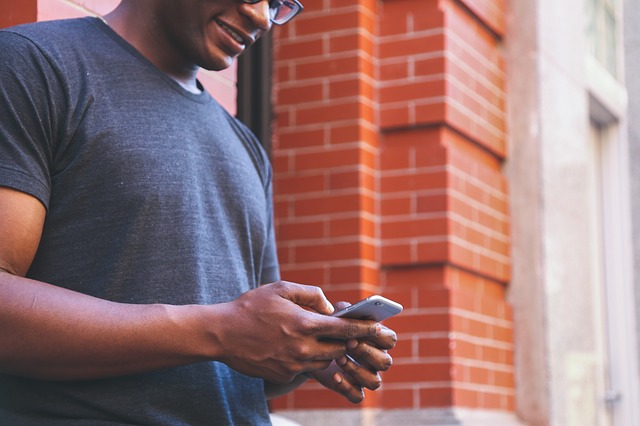3 Secrets to Gathering a Group
Wondering Who’s Coming to Your Meeting
When it comes to gathering a group of volunteers– we’ve all been there. You’re sitting at the coffee shop and check your watch one more time while keeping an eye on the door. There’s five minutes left before your volunteer team meeting is supposed to begin. You suddenly worry that no one will show up or, possibly even worse, only one person will show up leading to awkward conversation. You look back through your emails and texts finding a few who said “I’ll try to make it,” and “I should be there,” along with others who never responded to the invite. You consider texting your team members to confirm their attendance but realize it’s too late and there’s nothing left to do but wait and hope.
I’ve experienced this many times over the years while working with volunteers. I’ve prepped for a meeting with handouts or a powerpoint and worried at the last minute that no one was going to show up. A few years ago I tried something new when inviting people to meetings and it changed everything! It was a small change but I might even go so far as to say it changed my life. It impacted how I gathered a group of volunteers, friends, co-workers, sports teams, and even neighbors. But before I share 3 secrets to gathering a group, I’d like to explain why the traditional group-gathering strategy doesn’t work.
The Bystander Effect
There’s a scientific reason people don’t respond to mass emails and other communication. It’s called the Bystander Effect. It was first researched in 1968, a few years after a woman was brutally murdered in a highly populated neighborhood. Multiple people witnessed the attack but did nothing to help. Research revealed two reasons for this reaction. First, the more people around, the more responsibility is diffused and shared amongst everyone involved. Therefore, no one feels the need to respond. Second, people try to confirm to the actions of others. So, before responding to a situation, an individual may others to see if others are responding, it if no one responds to a situation, others may feel it’s appropriate to also not respond. The Bystander Effect impacts how we gather groups in a few ways.
Two Impacts of the Bystander Effect
1. The Bigger the Invite, the Smaller Your Response. Similarly, the more general your invite (i.e. would someone consider…), the less your chance of a response. Others will feel that someone will respond but the response doesn’t necessarily need to come from them.
2. Lack of Response will Breed Fewer Responses. If you receive few to no responses, others will be less inclined to respond. On the other hand, if everyone responds to a text or email, they’ll want to add in their response as well. No one wants to be feel left out or left behind.
Understanding the Bystander Effect helps set up the 3 secrets you need to know to gather a group.
3 Secrets to Gathering a Group
1. Invite the Core
Before you do anything else, consider who must be at your meeting. Start with 1-3 people. Decide when and where the meeting will be held with these few. These should be the 1-3 people that, if no one else came, your meeting would still be a success. Never plan a meeting without your core in place. Without a firm core, your meeting will fall prey to the Bystander Effect. People may not respond, or will watch to see if others respond. Once you have a few confirmed attenders, others won’t want to miss out.
2. Invite Others
Once you have your core in place, it’ll be time to invite others. When it comes to inviting other people to a meeting- the more personal the invite, the more effective. When choosing how you invite your team, choose the most personal communication available. Consider the following types of communication:
Personal (more effective)
Ask in Person (with personal follow up- are you coming?)
Ask on Phone
Ask in Person (with no follow up)
Ask in Text
Ask in Personal e-mail
Ask in mass text
Ask in mass e-mail
Impersonal (less effective)
If you need to write an email to a group, consider making your sentences as personal as possible. If you’re writing a recruiting email, use sentences like, “Would you consider being one of the 10 people…”. Once you’ve invited your core, you could also add their names into your communication. You could text, “Would you be able to attend our next leadership team meeting next Saturday at 10:00 AM? So far John, Amanda, and Craig can attend.”
3. Send a Reminder
Once you’ve done the work of inviting your core and invited others through the most effective means available-the last secret to inviting a group to do anything is the reminder. Well-intended people forget things like meetings. They may plan on attending but forget to add it to their calendar. You can help boost your attendance with one final meeting reminder- the day before your meeting. The reminder could be a text or email. The mode of this communication is not as important as others (as long as you know they’ll receive it).
If you will follow these three steps, you are sure to consistently increase the number of people attending your meetings. If the content of your meetings is worthwhile, eventually your team will prioritize your meetings and never miss one.
Summary: If you’re trying to gather a group for any reason- make sure you first develop your core, then personally invite people. Finally, send a last minute reminder to ensure high group attendance.
One more important regarding gathering a group: Sometimes the best stuff happens in smaller groups. Just because only one or two people can attend a group meeting- don’t automatically cancel the meeting. Instead, consider having that meeting and having the best meeting possible. Once your other teammates know that you had a fun and fruitful meeting, they may prioritize not missing the next one.
The Bystander Effect:
http://www.psychologytoday.com/basics/bystander-effect
http://en.wikipedia.org/wiki/Bystander_effect
http://www.youtube.com/watch?v=OSsPfbup0ac


